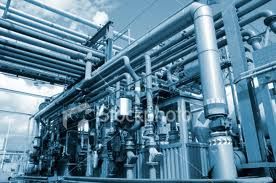
Petrolimex plans to expand into oil refining from its core business of distributing fuel and wants to build Vietnam's first pipeline to China to help the Southeast Asian country
meet an anticipated rise in demand for products this decade.
Hanoi-based Petrolimex, Vietnam's top oil product importer and distributor, said it planned to invest $4.4 billion to $4.8 billion in building a 200,000 barrel-per-day (bpd) oil refinery complex in the central province of Khanh Hoa.
It was seeking investors for the Nam Van Phong complex to produce gasoline, diesel, jet fuel, kerosene, liquefied petroleum gas (LPG) and petrochemical products, it said in a prospectus prepared for a July 28 initial public offering (IPO).
Petrolimex said progress on the complex, one of five new refineries planned in Vietnam for some years, was expected by 2015, but it was not clear if that referred to the start of construction or operations.
The prospectus also said the firm had discussed a $212 million project with China's top oil producer, PetroChina Co Ltd
, to build a pipeline to take Chinese refined products to Vietnam.
"With the Nghi Son and Long Son refineries on the horizon, Vietnam's import requirements were anticipated to be falling over the next decade already," said H.S. Yen, an analyst at FACTS Energy.
"If... this pipeline is completed, the capacity seems enough to allow Vietnam to sew up supply for almost all of its internal demand through its three refineries and the pipelines by 2020."
The country is Asia's No. 2 importer of gasoline, taking an average 3.8 million tonnes a year (2.5 million barrels a month), a third of Indonesia's imports. It also imports 4.4 million tonnes a year (nearly 3 million barrels a month) of diesel, almost 40 percent of import demand from top importer Indonesia.
CHINA OFFLOADING SURPLUS PRODUCTS
The pipeline would have initial annual capacity of 10 million tonnes (about 200,000 bpd) of gasoline, diesel and other products, close to Vietnam's total fuel imports for 2010.
"There may be weakness in the Asian gas oil market with Vietnam turning to China on a consistent basis via the pipeline, as demand from Vietnam has provided some support to the regional benchmark historically," said Priya N Balchandani, an oil products analyst at Standard Chartered Bank.
"This will offer China a fixed avenue to offload surplus refined products and remove the necessity for Vietnam to expand their refining industry which has proved to be challenging," she added.
Vietnam, which has just one major refinery -- the 130,500-bpd Dung Quat complex -- aims for fuel self-sufficiency by developing total annual processing capacity of 25 million to 30 million tonnes (about 600,000 bpd) by 2020.
But the country is struggling with economic turbulence marked by swings in inflation and a slide in the value of its dong currency, a chronic trade deficit worsened by declining crude exports, as well as local issues which deter foreign investments in the refining sector.
Vietnam's oil product imports fell 28.6 percent last year as Dung Quat began operations, meeting up to 35 percent of domestic demand, according to government statistics and industry reports.
However, annual consumption of oil products would rise between 6 percent and 8 percent between 2011-2015, in line with economic expansion of 7-8 percent per year, Petrolimex said.
Vietnam used 16.3 million tonnes of oil products last year, including 11.6 million tonnes of imports. Total demand rose 8.7 percent, the prospectus said, citing trade ministry data.
Domestic demand was forecast at 19.5 million tonnes by 2013 in Petrolimex's projection, jumping by 2020 to between 29 million and 31.2 million tonnes a year.
FIRST CHINA-VIETNAM PIPELINE
The planned pipeline would link PetroChina's refinery in Qinzhou in Guangxi province bordering Vietnam with a Petrolimex storage facility in the northern province of Quang Ninh.
It would be the first such facility to be built between the two countries, which have had territorial disputes since late May over resource-rich areas in the South China Sea, which covers the world's busiest sea lanes and provides rich fishing.
"Technically, they don't see any problems in building the pipeline, but economically it's not so clear and it's a long way to go," a Vietnam-based trader said.
Petrolimex was looking at starting to build the pipeline in 2014, Deputy Chief Executive Vuong Thai Dung told Reuters, adding the firm could import products from elsewhere if the price was cheaper.
"The pipelines will provide more convenient transportation," he said. "We haven't negotiated on the investment yet. We wish to have funding from China for the project but we'd probably fund it by ourselves," he said.
The pipeline in Vietnam would run over a distance of up to 225 km (140 miles), Petrolimex said.
On the Vietnamese section, the pipeline would take 3.0 million to 3.5 million tonnes of products a year to a storage with capacity of 150,000 cubic metres, Petrolimex said.
Some analysts questioned the need for a pipeline. "And they plan more refineries, which begs the question why build the pipeline in the first place, which would have a 10 million-tonne capacity, the same as the 2010 total imports of Vietnam," said Tom James, Chairman of Navitas Resources.
PetroChina has said it would operate its 200,000-bpd Qinzhou refinery in southern China at an average of 80 percent capacity in 2011, after processing about 2.2 million tonnes during a test run between September and December 2010.
Petrolimex said it expected to raise at least $20 million from selling nearly 27.43 million shares, or 2.56 percent of the firm's registered capital, at the IPO later this month.
Based on a price of 15,000 dong ($0.73) per share for the IPO, the company would be worth some $781 million.
Petrolimex imports 55 percent of the oil products that Vietnam purchases abroad and has a 55 percent share of the domestic oil products market.
Source: Reuters
We use cookies to improve your experience. By continuing to use our site, you accept our Cookies, Privacy Policy,Terms and Conditions. Close X